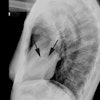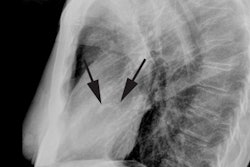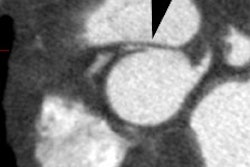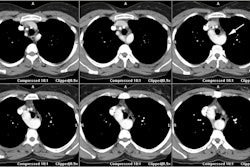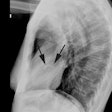Anomalous Origin of the Right Coronary Artery
Clinical:
Congenital coronary artery anomalies occur in approximately 0.5% to 1.5% of the general population [3]. The anomalies can occur in conjunction with complex congenital heart disease or as an isolated anomaly [3]. Approximately 20% of coronary artery anomalies produce life-threatening symptoms including arrhythias, MI, and sudden death [4].The right coronary artery normally arises from the right coronary sinus of Valsalva [2]. It runs anteriorly between the pulmonary trunk and the auricle of the right atrium and then continues within the right atrioventricular groove [2]. There are several anomalies of the right coronary artery which can be associated with cardiac complications.
1- Anomalous origin of the right coronary artery from the main pulmonary artery: This is a rare congenital malformation. Most affected patients are asymptomatic. Symptomatic patients can present with congestive heart failure, angina, infarction, or cardiac arrest. Associated cardiac defects are reported in 40% of patients- most commonly an aortopulmonary window. Corrective surgery is recommended even if the patient is asymptomatic.
2- Anamolous origin of the right coronary artery from the left sinus of Valsalva: The RCA arises from the left sinus of Valsalva and then courses between the pulmonary truck and aorta before entering the right atrioventircular groove [2]. This condition is associated with sudden death in 25-40% of patients (particularly with exercise) [2].
REFERENCES:
(1) Ann Thorac Surg 1998; Radke PW, et al. Anomalous origin of the right coronary artery: Preoperative and postoperative hemodynamics. 66: 1444-1449
(2) AJR 2004; Hague C, et al. MDCT of a malignant anomlaous right coronary artery. 182: 617-618
(3) J Nucl Med 2004; De Luca L, et al. Stress-rest myocardial perfusion SPECT for functional assessment of coronary arteries with anomalous origin or course. 45: 532-536
(4) Radiology 2005; Datta J, et al. Anomalous coronary arteries in adults: depiction at multi-detector row CT angiography. 235: 812-818
